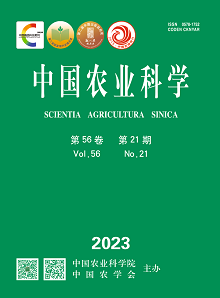【Objective】The main controlling factors of soil fertility and temporal and spatial evolution characteristics in typical county of cinnamon soil region were investigated, so as to provide the basis for scientific management of nutrients and soil fertilization.【Method】Based on the data of soil fertility, including soil organic matter (SOM), total nitrogen (TN), available phosphorus (AP), available potassium (AK) and pH, at Shouyang County in 1983, 2007 and 2017, the Nemerow index method was used to calculate the comprehensive index of soil fertility, the random forest method was used to explore the main controlling factors of soil fertility, and the combined method of GIS and geostatistics was used to determine the temporal and spatial variability characteristics and the distribution patterns of the comprehensive index of soil fertility and its main factors.【Result】(1) The overall level of cultivated land soil fertility showed an upward trend in Shouyang County during the past 34 years, and the comprehensive index of soil fertility increased by 0.26, which changed from 1.16 to 1.42. The changes of soil fertility index were characterized by stages. From 1983 to 2007, the average annual increases of SOM, TN and AK were 0.09 g·kg-1, 0.0021 g·kg-1 and 1.61 mg·kg-1, respectively, while the changes of AP were not significant. From 2007 to 2017, SOM, TN and AP increased significantly, with the average annual increases of 0.25 g·kg-1, 0.01 g·kg-1 and 0.31 mg·kg-1, respectively, while the changes of AK were not significant. (2) The analysis results of the random forest model showed that, the main controlling factors of soil fertility were TN and SOM in 1983, with the importance of 75.3% and 17.8%, respectively. In 2007, the main controlling factors of soil fertility became AK, AP and TN, with the importance of 31.8%, 27.1% and 26.8%, respectively. In 2017, the main controlling factors were TN, AK and AP, and the importance for the three factors were 31.8%, 27.1% and 26.8%, respectively. (3) There were certain spatial differences in the main controlling factors of soil fertility. From 1983 to 2007, SOM increased in the whole county; TN decreased in the northwest and central regions, but increased in other regions; AP decreased in the north regions, but increased in the south regions; AK increased in the whole county. From 2007 to 2017, SOM increased fast in the southeast regions but slow in other regions; TN decreased in the middle regions but increased in other regions; AP decreased in the east regions, but increased in other regions; AK decreased in the east and west regions, but increased in the central region.【Conclusion】After 34 years, the cultivated land soil fertility of Shouyang County has been improved, and SOM, TN, AP and AK were the main controlling factors affecting the soil fertility variability. SOM, TN and AP increased fast in the south regions, while AK increased fast in the east regions. It was suggested that the whole Shouyang County still needed to increase the application of nitrogen fertilizer moderately, especially in the central region, and stabilize the application of phosphate fertilizer, while control the application of potassium fertilizer in the future.









